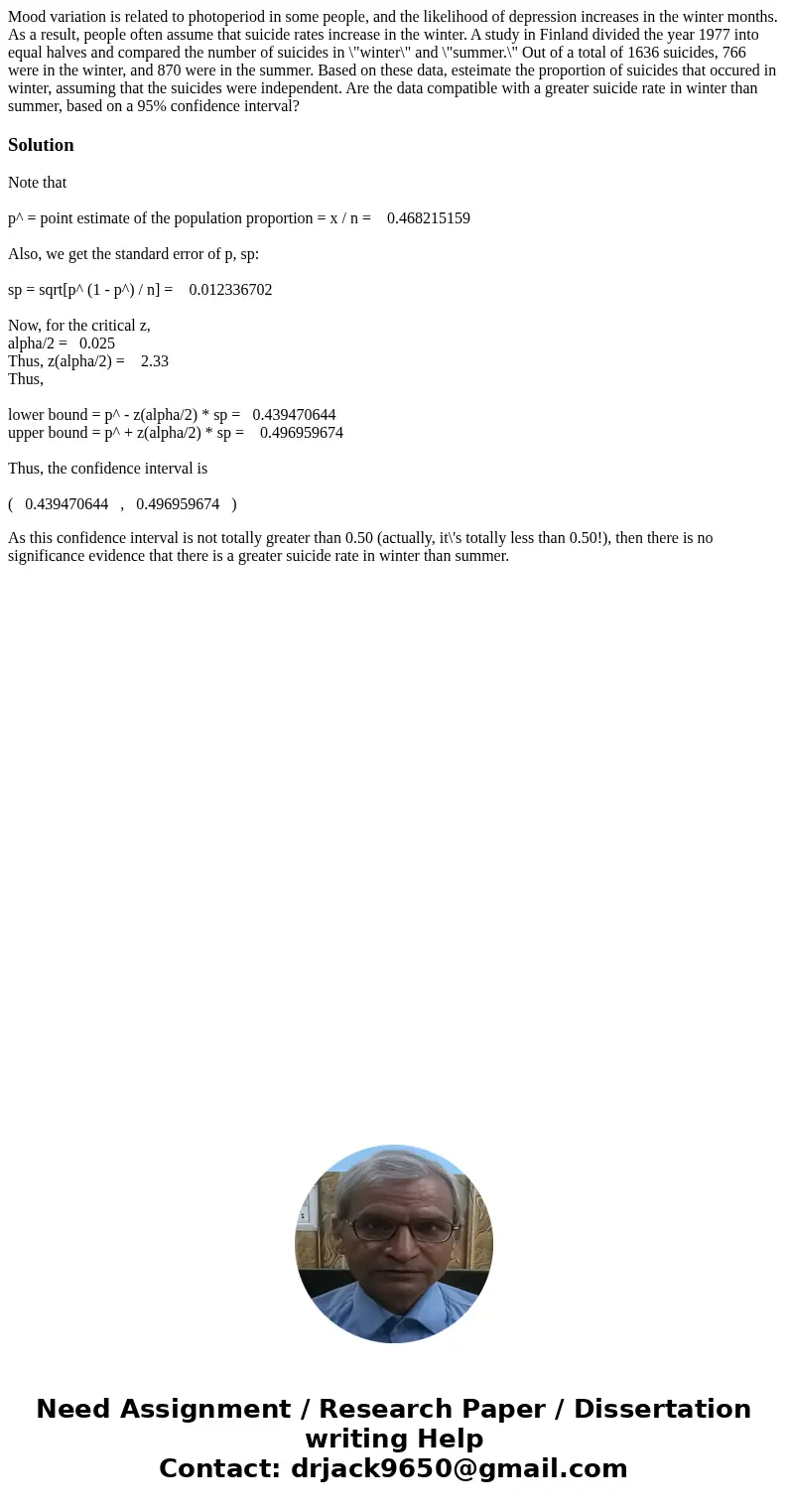Mood variation is related to photoperiod in some people and
Mood variation is related to photoperiod in some people, and the likelihood of depression increases in the winter months. As a result, people often assume that suicide rates increase in the winter. A study in Finland divided the year 1977 into equal halves and compared the number of suicides in \"winter\" and \"summer.\" Out of a total of 1636 suicides, 766 were in the winter, and 870 were in the summer. Based on these data, esteimate the proportion of suicides that occured in winter, assuming that the suicides were independent. Are the data compatible with a greater suicide rate in winter than summer, based on a 95% confidence interval?
Solution
Note that
p^ = point estimate of the population proportion = x / n = 0.468215159
Also, we get the standard error of p, sp:
sp = sqrt[p^ (1 - p^) / n] = 0.012336702
Now, for the critical z,
alpha/2 = 0.025
Thus, z(alpha/2) = 2.33
Thus,
lower bound = p^ - z(alpha/2) * sp = 0.439470644
upper bound = p^ + z(alpha/2) * sp = 0.496959674
Thus, the confidence interval is
( 0.439470644 , 0.496959674 )
As this confidence interval is not totally greater than 0.50 (actually, it\'s totally less than 0.50!), then there is no significance evidence that there is a greater suicide rate in winter than summer.

 Homework Sourse
Homework Sourse